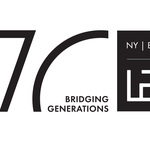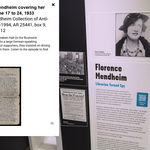Walter Langhammer and the Illumination of India



- Author
- Annedore Wilmes
- Date
- Mon, Oct 24, 2016
A trio of landscape paintings in the LBI Art Collection seem to have come from a peculiar expressionist travel prospectus. Rendered in brilliant colors with broad, loose strokes, a handsome market square goes about its business languidly in the afternoon sun, an alpine village bathes in the current of cool air drifting down the bulk of a snow-crested ridge, and a small lakeside town crowds against the gauzy reflection of far-off mountains in the water. The allure of these European idylls belies the fact that their painter’s star would shine far more brightly on another continent entirely.
Walter Langhammer, born in 1905 in the Austrian city of Graz, is considered one of the founding fathers of the most famous of India’s schools of modern oil painting, the “Bombay Progressives.” Founded after the partition of India in 1947, this group of young Indian artists had sought out Langhammer’s tutelage and drawn inspiration from the traditions of European oil painting to establish an independent artistic identity.
When Langhammer fled for Bombay (known today as Mumbai) after the National Socialist annexation of Austria in 1938, he was already well-established as an artist. Among his teachers at the Vienna Academy of Fine Arts had been Ferdinand Andri, Hans Tichy, and Josef Jungwirth. Unlike his wife Käthe Urbach, Langhammer was not Jewish, but his political leanings, which occasionally found expression in the form of caricatures, were decidedly anti-Nazi. An Indian former student of Langhammer’s in Vienna, Shirin Vimadala, urged the couple to move to India and convinced the publisher of the Times of India to offer Langhammer a job as the paper’s first art director.
Ironically, Walter and Käthe were arrested as enemy aliens by the British authorities after their arrival in India. They were separated, with Käthe held at Satara and Walther in Ahmednagar, where he was hounded by his fellow prisoners for his anti-Nazi positions. Only after Käthe had their common friend, the artist Rudolf von Leyden, submit newspaper clippings of Walter’s Hitler caricatures to the authorities were both released in 1941.
The Langhammers built a studio in their apartment and accommodated young Indian artists who sought a place to work. On Sundays, Walter and Käthe hosted a salon for artists and intellectuals in their home. Together with Rudolf von Leyden and Emmanuel Schlesinger, Langhammer helped introduce a generation of artists to an aesthetic that was fundamentally different from that of the Royal Academy of Art, which controlled art education in Indian schools. The salons discussed the work of Picasso and other modern European artists.
Syed Haider Raza, Langhammer’s protégé and a key figure among the Progressives, recalled how Langhammer critiqued his work and introduced him to the work of European artists like Raphael, El Greco, Monet, and Cézanne as well as Persian and Indian Rajput miniature painting. Raza credited Langhammer with helping him develop an awareness of form through the analysis of paintings. “You have to practically dissect the paintings,” Raza recalled Langhammer saying. “You must be able to say exactly what differentiates a Matisse from a Picasso or a Monet from a Cézanne.”
By sharing his own artistic training as well as his relative wealth, Langhammer nurtured the young artists that would go on to form the Progressive Artists Group. He also helped his students make connections with European émigré intellectuals, industrialists, and physicians who became early patrons or champions of the Progressives, including the Times of India art critic Rudolf von Leyden.
Just as Langhammer influenced the Progressives, they, and the experience of India, shaped his own work. According to von Leyden, the colors and light he encountered in India became his obsession. “I’m in it for color,” the critic once recalled his friend saying at the Bombay Art Society.
As his health declined, Walter returned with Käthe to Europe, where he died in 1977 at the age of 72. We do not know whether it is a purely Austrian sun, or some of the light of India as well that illuminates the handsome marketplace, the alpine village, or the town by the lake. It is unclear whether the paintings originated before or after Langhammer’s emigration. In either case, it’s clear that color is the painting’s real subject.
Literature
Dalmia, Yashodhara. The making of modern Indian art: the Progressives. Delhi: Oxford University Press, 2002.
Latest News





